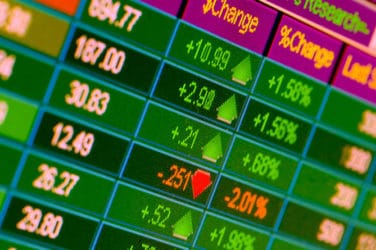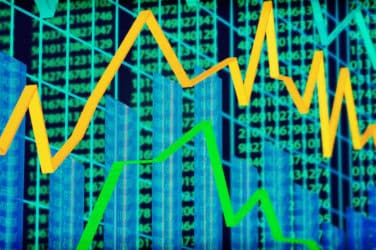By Salvador Rodriguez and Ben Stephens, Instinet Europe
As broker crossing networks (BCNs) are regulated out of existence, and the flows of liquidity are altered, a new landscape is emerging for European equities. It will fundamentally impact the relationships between trading firms and their clients, and transform the role of proprietary trading firms, banks and brokers. When combined with evolving and ever improving technological capabilities, this seismic shift in the ecosystem will result in unprecedented opportunities to “personalise” the equity trading experience down to an individual trader – a new sort of “social network” across the equity markets.

Sal Rodriguez, Instinet
For market participants, the toughening of best execution rules under MiFID II brings fresh challenges. The new rules will reinforce the need to ensure access to the broadening array of liquidity options, which now includes ‘request-for-quote’, indications of interest, bilateral trading with market makers, price discovery and liquidity-seeking protocols more traditionally associated with the foreign exchange and fixed income markets.
We may end up in an environment in which, outside of exchanges, each price on every platform is honed for individual clients or even traders. Managing order routing across an array of divergent pricing – lit or dark, actionable or conditional, for size or price-priority and so on – could be nearly impossible for many market participants. Like Deep Blue taking on Kasparov in the famous 1997 chess match, computing power has reached a level where it is possible to overcome, and benefit from, the opportunities offered by this level of choice and complexity.
The changes in the market could be as stark as in 1986, when London’s Big Bang eliminated the role of jobbers and radically redefined the role of stockbrokers. Since then, decades of competitive evolution and the resulting regulatory responses have created a patchwork of exchanges, multilateral trading facilities (MTFs), over-the-counter liquidity providers and BCN broker internalisation engines. In the new world, proprietary trading firms will offer prices to clients (sometimes one-to-one, and sometimes through brokers), investment banks will fine-tune their risk-taking businesses, and new counterparty relationships will be developed.
MiFID II is the catalyst signalling the end of the BCN, which has flourished largely as a result of a loophole in the original MiFID I regime and brokers’ desire to offer best execution to their clients. In many cases this meant crossing agency client flows before routing orders to the market. The BCN dark pool was not a market place adaptation for which regulators had developed prior guidance. Now they have. For dark pools, the changes the new regulation brings are perhaps as great as any other area under review, with multi-lateral venues such as BCNs requiring registration as MTFs, crossing limited to mid-point and trading capped at a maximum of 8% of volume that may be executed in the dark across the market.

Ben Stephens, Instinet
New entrants and challengers offering tailored liquidity are filling the niches created by the end of the BCN often by registering as Systematic Internalisers (SIs), which, accompanied by technological advances, will give all market participants the power to customise their trading down to the individual. While a challenge to the status quo and likely to be mightily confusing during the transition, liquidity will be calibrated for exactly who, how and when orders need to be executed. The changes will also increase the value of relationships; counterparties need to be incentivised to work together for mutual benefit over the long term.
With the implementation of MiFID II just months away, firms are realising the need to change their business models to optimise their access to these new trading opportunities. As some dark pools dry up there will be no shortage of liquidity, it will just be harder to analyse and access. The computing power of proprietary traders will create a range of liquidity options, which could enhance quality for all end clients, with retail and the largest investors set to benefit from price improvement and more block trading respectively. Thriving in a more tailored, individualised world will require managing a vast array of data, deploying well thought-out trading strategies and cultivating new connectivity and relationships. As the landscape shifts, decisions about how to aggregate liquidity and the best ways to manage smart order routing will grow in importance for all market participants.
While the entire financial services industry has been transforming itself through innovation and technological advances for the last few decades, the acceleration required in the coming months is proving to be every bit as daunting as it is exciting for market participants. The regulatory requirements that will be implemented under MiFID II will vastly change the current state of the European financial marketplace. With more choices, and faster, more fragmented information than ever before, clients may find that the need to astutely personalise their liquidity, and the network by which they access it, will be critical in order to thrive in the new paradigm of personalised trading.
©2017 Instinet Incorporated and its subsidiaries. All rights reserved. INSTINET is a registered trademark in the United States and other countries throughout the world. Approved for distribution: in Australia by Instinet Australia Pty Limited (ACN: 131 253 686 AFSL No: 327834), which is regulated by the Australian Securities & Investments Commission; in Canada by Instinet Canada Limited, members IIROC/CIPF; in Europe by Instinet Europe Limited, which is authorized and regulated by the Financial Conduct Authority; in Hong Kong by Instinet Pacific Limited, which is authorized and regulated by the Securities and Futures Commission of Hong Kong; in Singapore by Instinet Singapore Services Private Limited, which is regulated by the Monetary Authority of Singapore, a trading member of The Singapore Exchange Securities Trading Private Limited and a clearing member of The Central Depository (Pte) Limited; and in the US by Instinet, LLC, member SIPC. This material is made available for informational purposes only and does not constitute an offer, solicitation, or recommendation with respect to the purchase or sale of any security, product or service. This material does not take into account the particular investment objectives, financial situation or needs of individual clients. No representation or warranty, express or implied, is or will be made and no responsibility or liability is or will be accepted by INSTINET or by any of their respective officers, employees or agents in relation to the accuracy or completeness of this material or any other written or oral information in respect thereof made available to you or any agent and any such liability is expressly disclaimed.





